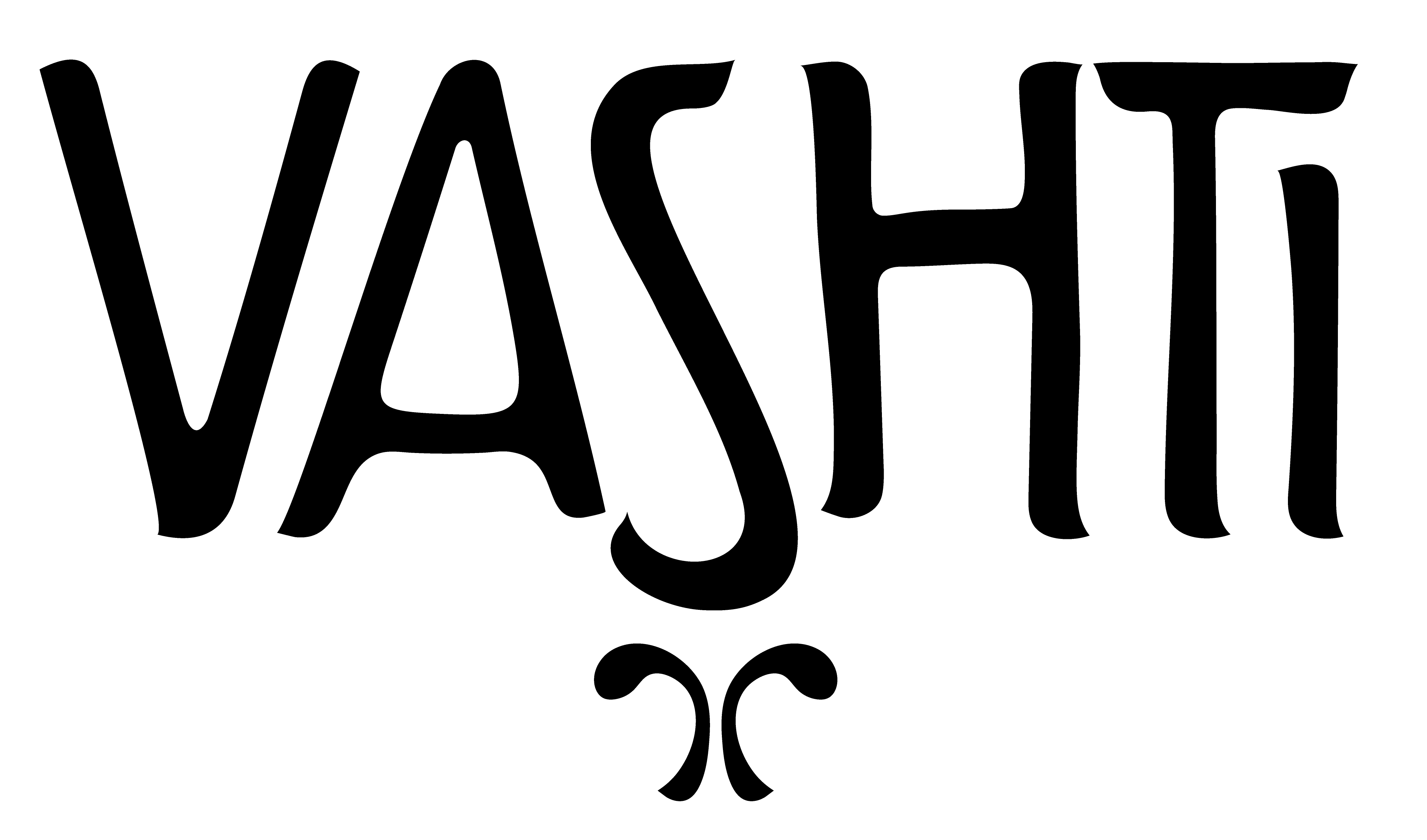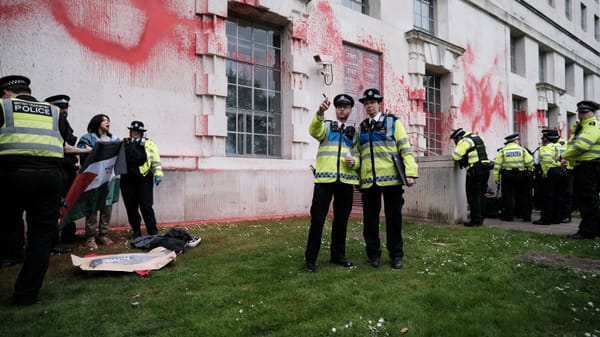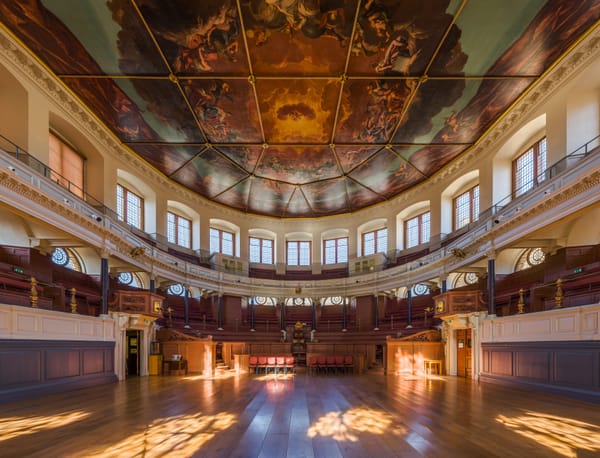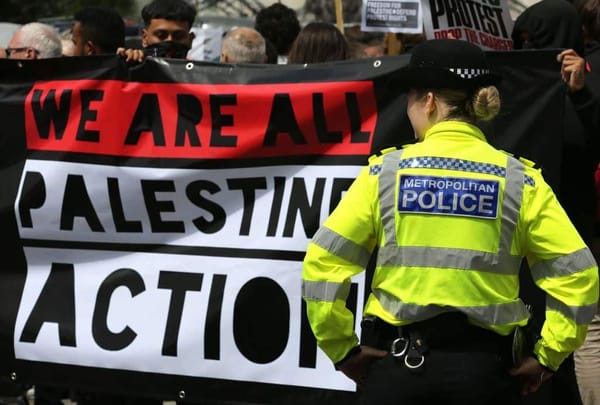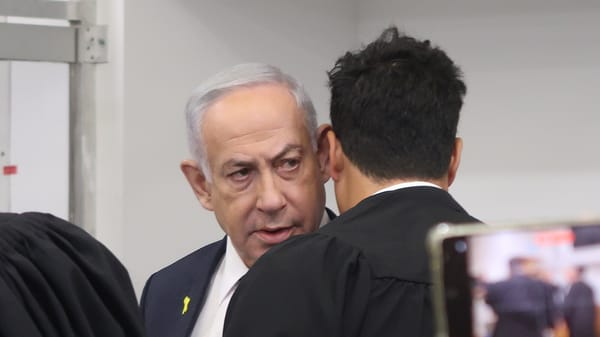Homos, Houmous and Hamantaschen: Vashti Meets Chanukah Lewinsky
On the eve of Purim, Vashti speaks to drag artist and queer cabaret creator Dex Grodner about Judaism and genderfuckery.
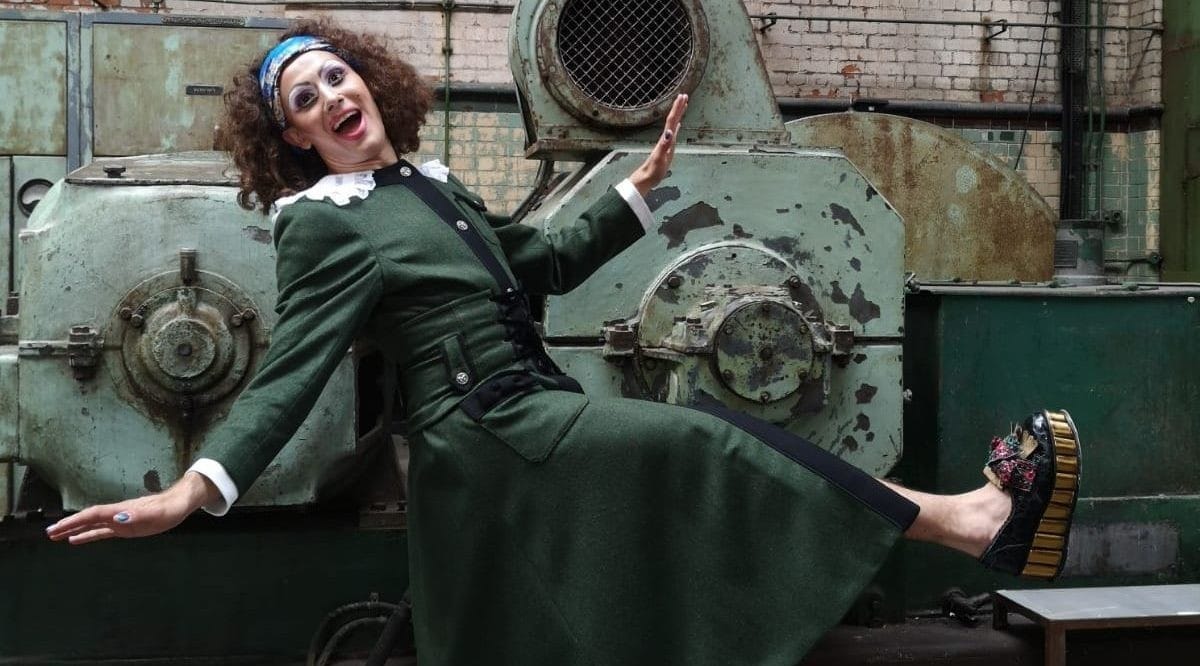
Dex Grodner – aka yiddishe mameh, East End starlet and music hall madame Chanukah Lewinsky – is a performer, drag queen, queer historian, poet and activist, but perhaps best-known as co-creator of Homos and Houmous. The queer Jewish cabaret night, which debuted at Housmans Bookshop in 2016, draws on nineteenth-century Jewish vaudeville to invite explorations of Judaism, queerness and radical solidarity. A self-described “raucous family affair: where Bette Midler’s musical stand-up in the bathhouses of New York meets arguments over Shabbat dinner”, recent shows have included klezmer, DJs, drag and Yiddish poetry. More recent ones, adapted for Zoom, have attracted audiences from all over the world.
Tonight’s is in support of the pay-what-you-can Yiddish anarchist café Pink Peacock, due to open its doors in Glasgow later this year. On the eve of Purim and the day of the festive fundraiser, Dex spoke to Vashti editor Anya Metzer about Judaism’s Bacchic spirit.
Anya: Purim is a festival about concealing your identity, performing, dressing up, partying. Do you think Purim is a queer chag (festival)?
Dex: For me, queerness is all about the cracks that people slip through, or break open and thrive in. Purim is all about that; it’s built on cross-dressing and genderfuckery. It’s a chance for artists and workers to spoof the ruling classes, whether that’s in Babylon or the present day. It’s the throng, the masses, the drunkenness.
The Purim plays of the seventeenth-century brought tradesmen, klezmer musicians and yeshiva boys into the homes of the upper-middle classes to perform for food and money. You can end up places you don’t expect. It was on Purim, growing up, that a load of us queer goth teenagers would get swept into the Lubavitch House in Edgware, mostly for the free drinks.
I think the queerest thing about Purim is the transformative nature of a Purim party or Megillah reading. It’s folk theatre and, I think, the best introduction to Jewish life for friends and allies, because there are no tourists. You’re all part of the action.
More generally, do you feel like Judaism is a comfortable space for performance, for gender play and queer identities?
Judaism is inherently theatrical. There’s something camp about our gender relations. I grew up in a house of loud, flamboyant women with sequinned twin-sets and filthy jokes. I remember reading the trans Jewish zine Tim Tum as a teenager and finding out that there were at least six genders mentioned in the Talmud.
Do you feel that your art has influenced your Jewish identity?
Chanukah Lewinsky brings Jews and non-Jews together. She’s a house.
In 2018 I wrote my solo show, Chanukah Lewinsky: 120 Years from Grodno, which mapped a migration pattern of Jewish women theatre-makers and politicians expelled from sites of power who kept moving. Trans*lation, trans*ition, trans*gression. There’s something about being queer, trans, Jewish, that requires you to get used to living in transit.
Monica Lewinsky is my Britney Spears. She’s a gay Jewish icon. To keep moving when there’s so much power and hate on the other side. Everything she does as a queer and trans ally, as an activist and entertainer. If she’s reading this, I’d love to collab! Chanukah Lewinsky is my mother, lightly smattered with yentas from shul, and the loud women of New York vaudeville and comedy: Sophie Tucker, Bette Midler, Sandra Bernhard. It’s a style of witty, fast-paced storytelling I just love.

You have this show tonight with Pink Peacock, with whom we had the pleasure to speak last summer. Do you feel like you’re part of an emerging radical Jewish sphere in the UK?
Oh, it’s phenomenal: there’s Pink Peacock, Babel’s Blessing, Jewdas, Buttmitzvah. It’s really exciting seeing the community building. One day I would love to see the Bund reestablished, with all of the questions that would bring up: what is the socialist Jewish voice? What are its aesthetics?
I’m excited by the anti-assimilationist bent Judaism has been taking lately, particularly this Yiddish revival. People like Annie Cohen, running Yiddish classes, and Vivi Lachs, doing amazing research into Yiddish music halls.
What might the motifs of a Jewish socialist anarchist aesthetic be? What kind of energy might motivate it?
It would have to come out of ensemble work. For a long time in Britain, we’ve had this culture of solo confessional theatre, in which marginalised peoples are encouraged to turn their trauma into shows that the Arts Council will fund for under £15,000. It’s just not sustainable, either financially or emotionally.
Plus I don’t believe in individual genius. As performers, we’re told that we should be our own social media people, photographers, makeup artists. But actually, it takes a village. I want us to shift away from individuals building our own greatness to a group of people building something great together.
I want to see bigger groups of performers ask questions like: what do Jewish relationships look like? What is the diasporic voice? What are British Jewish socialist aesthetics today? That’s only gonna happen when we have buildings that can support long-term theatrical inquiry about our collective experience, struggle and priorities.
Cabaret has its own history as a site of political satire and sexual expression in Weimar Germany. What kind of storytelling or experience does cabaret offer that scripted plays don’t?
Cabaret is a broad church (or synagogue). It allows for a diversity of artists; it’s a chance to platform a wide array of voices and perspectives at the same time. A big priority of mine is ensuring that Homos and Houmous is a voice for older queer artists, as they’ve been sidelined during this pandemic – particularly when certain venues were trying to open last year in a way that wasn’t accessible for all of the community.
There’s also the polymorphousness of it, the fact that like all of these voices can come together, sometimes in conflict with one another. With cabaret, the art is a kind of electricity in the air. It’s in the room – or on the Zoom.
It’s cheaper, that’s the other big one. Variety shows have proliferated in LGBTQ venues because it’s an affordable form. But it’s not necessarily one that can sustain its artists. That’s why it feels important to me that we own the venues. Cabaret allows for short, impactful experimentation. But also I love to imagine the magic that would happen were these cabaret artists to follow something through together in the long-term.
The pandemic has disrupted so many ways we exist in community. Have you found that it has opened up any new forms of community for you?
It’s been really exciting over lockdown actually having this global community of artists. [Theatre-maker and non-binary drag performer] That Ray and I have welcomed people from Lebanon, Australia, South Africa and all over Europe and North America into our living room in Stamford Hill. At our last show, we had Shane Baker from the Congress for Jewish Culture in New York – he was the main translator of Waiting for Godot into Yiddish – and a drag queen called Nana Schewitz from Jews! Jews! Jews! in Berlin perform.
This past year has been a steep learning curve in what does and doesn’t work online. What I’ve learnt from Vivi Lachs and the Yiddish Open Mic Café (if you haven’t been, you’re missing out) is that it has to be international, intergenerational and driven by a sense of community. I love to pull people up on screen and ask them about their day, dinner, anything. I think people are a lot less stressed to engage online than to be pulled up on-stage at a live show. But if people feel they’re being streamed at, or they could watch it later on YouTube, they’ll switch off.

What next for Homos and Houmous? Do you expect things to change post-pandemic, or go back to how they were?
In that sense, this year has been a funny one for Homos and Houmous. Before the pandemic, we were planning a national tour, working with Centre for Live Art in Yorkshire, DINA in Sheffield and Partisan Collective in Manchester. Its aim was to ask: where are the Jewish artists in the north? Who are they, and what do they need to be more robust? I worry about the brain drain to London.
Before lockdown, we were set to be in residence at the Royal Vauxhall Tavern, a historic and vibrant queer venue with a rich history of drag and theatre. They’ve been really supportive during the pandemic, and I can’t wait to bring Homos and Houmous back there later this year.
We want to get off this island – who doesn’t? Berlin, New York, anywhere that’ll take us. I’ve missed ensemble work. I can’t wait to get a load of Jews in a room together. But we mustn’t lose our internationalism. I love that people can now come to our shows from Massachusetts. Digital will always play a role, and things will be more hybrid going forward.
What advice would you give to those who want to get involved in cabaret?
Our art doesn’t happen in a vacuum. Get involved in community organising; attend your local cabaret. Go to everything and talk to everyone.
In the early days, I’d go along and watch artists do their makeup. Coming back to London in 2017, there was this incredible buzz of energy around a venue called LimeWharf in Bethnal Green, run by Tam Vibert. They gave me a residency for Homos and Houmous and we took off from there.
Sign up to perform at one of our shows! Anyone can for this show with Pink Peacock tonight. In fact, there are still a couple of slots still open, if you want to throw your hat into the ring. ▼
Queer Purim Community Cabaret and Non-Traditional Auction is on Zoom 8-10.30pm GMT tonight, Thursday 25 February 2021. Registration is free but donations welcomed. Register here.
Anya Metzer is an editor at Vashti. She studied gender, pathology and Victorian social thought in English literature, and works in international development.
